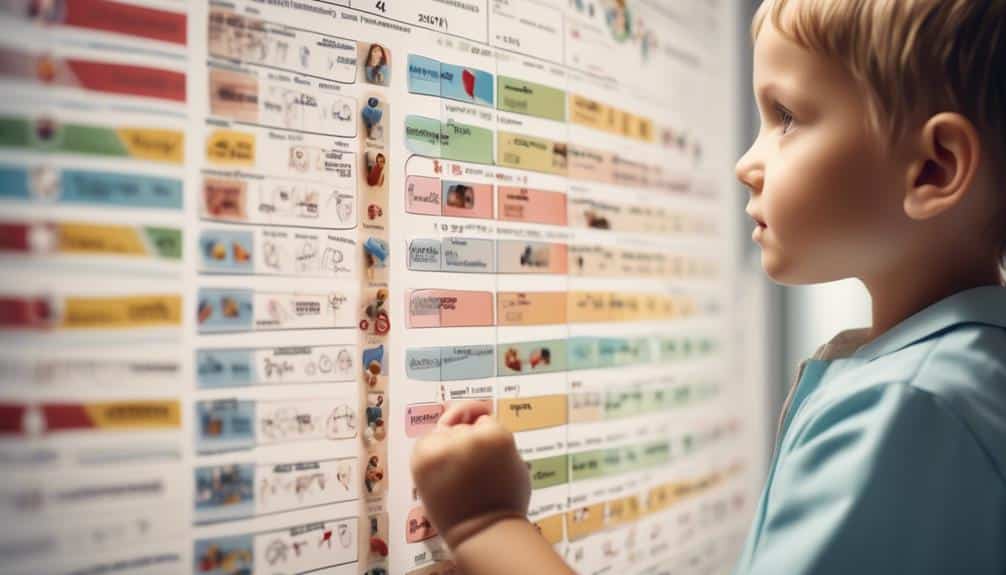Attention Deficit Hyperactivity Disorder (ADHD) is a complex neurodevelopmental disorder that affects many children worldwide, presenting challenges in their academic, social, and family lives. ADHD diagnosis techniques in children require a meticulous and multi-faceted approach, as its symptoms often overlap with those of other conditions. The process involves not just the observation of behaviors but a comprehensive evaluation that includes behavioral observations, parent and teacher reports, ADHD rating scales, psychological testing, and more. Each method plays a crucial role in painting a complete picture of the child’s condition, considering variations in symptoms across different settings and the impact on daily functioning.
As we explore these nine proven methods for diagnosing ADHD, it becomes evident that the journey to a diagnosis is as intricate as the disorder itself, underscoring the importance of a thorough and nuanced approach. The implications of these methods extend beyond diagnosis, offering insights into effective management strategies that can significantly improve the quality of life for children with ADHD and their families.
Key Takeaways
- Behavioral observations and reports from parents and teachers are crucial in diagnosing ADHD in children.
- ADHD rating scales and psychological testing provide structured tools for evaluating symptoms and their impact on daily functioning.
- Computer-based assessments offer objective insights into cognitive functions and can reveal struggles with attention and impulsivity.
- Medical examination and neurodevelopmental history, including a thorough medical history and neurological assessment, play a pivotal role in diagnosing ADHD and screening for other conditions.
Behavioral Observations
Behavioral observations across varied settings such as home, school, and social environments are essential to accurately detect children, as they provide insight into the child’s interaction patterns, focus abilities, and impulse control. These observations are a cornerstone in understanding how a child with ADHD acts in different contexts, revealing the multi-faceted nature of ADHD symptoms.
Through careful monitoring, healthcare professionals and educators can note the child’s behavior, particularly their ability to stay on task, follow instructions, and interact with peers and authority figures.
Behavioral observations help in identifying critical patterns of hyperactivity, impulsivity, and inattention that are hallmarks of ADHD. This method allows for a nuanced view of the child’s behavior beyond what can be captured through rating scales alone.
Through these detailed observations, clinicians can assess the impact of the child’s behavior on their daily life and overall functioning, paving the way for a comprehensive diagnosis. By observing how children with ADHD navigate their environments, stakeholders can develop targeted interventions that address the unique needs of each child, ensuring a path toward successful management of symptoms and improved quality of life.
Parent and Teacher Reports
Frequently, parent and teacher reports are indispensable in identifying and understanding the nuances of ADHD symptoms in children across various environments. These insights are pivotal in piecing together a holistic picture of how the child functions in different settings, which is essential for an accurate ADHD diagnosis.
By documenting specific instances where ADHD symptoms manifest, parents and teachers contribute to a richer, more detailed understanding of the child’s challenges and needs. This collaboration is crucial in the diagnostic process, ensuring that all aspects of the child’s life are considered.
From Parents: Insights into home life, social interactions, and any noticed behavioral patterns that might suggest a child has ADHD.
From Teachers: Observations related to academic performance, social behavior in school, and any accommodations that might help the child.
The goal is to diagnose ADHD accurately, opening pathways to effective interventions like behavioral therapy. Understanding a child’s symptoms through parent and teacher reports not only aids in diagnosis but also fosters a supportive network aimed at helping your child thrive.
This partnership underscores the importance of a comprehensive approach to diagnosing and managing ADHD symptoms, ensuring every child receives the care and support they need.
ADHD Rating Scales

ADHD Rating Scales are a structured tool for evaluating ADHD, incorporating various types to assess symptoms across different environments comprehensively.
Their role is pivotal in the diagnostic process, ensuring a multi-faceted view of the child’s behavior by gathering inputs from parents, caregivers, and educators.
This evidence-based approach not only aids in identifying the presence and severity of ADHD symptoms but contributes significantly to understanding their impact on a child’s daily functioning and quality of life.
Types of Rating Scales
Various ADHD Rating Scales are employed to systematically evaluate and quantify the symptoms of ADHD in children, offering insights critical for diagnosis and treatment planning. These tools reflect a compassionate approach toward understanding and managing attention deficit hyperactivity disorder, a prevalent mental health condition.
By assessing inattention, hyperactivity, and impulsivity symptoms, these scales facilitate a comprehensive view of the child’s behavior across multiple environments, which is crucial for healthcare providers and mental health professionals.
Prominent Scales Include:
- Vanderbilt Assessment Scale: Endorsed by the American Academy of Pediatrics for primary care.
- Conners Rating Scales: Widely used for detailed behavior management analysis.
These scales, integral to the diagnostic and statistical manual’s guidelines, enable a collaborative effort between families and professionals in crafting an effective intervention plan.
Importance in Diagnosis
In the diagnosis of attention deficit hyperactivity disorder (ADHD) in children, rating scales play an indispensable role, providing a structured mechanism for evaluating symptom severity and frequency from multiple perspectives. These tools are critical in gathering detailed insights from various environments, such as home and school, enabling pediatricians and mental health professionals to compare a child’s behavior against the criteria outlined in the American Psychiatric Association’s Statistical Manual of Mental Disorders.
Psychological Testing
As we transition to the subtopic of psychological testing in the diagnosis of ADHD in children, it is crucial to understand the variety of tests available and the complexities involved in interpreting these assessments.
These tests evaluate diverse aspects of a child’s functioning, including cognitive abilities and behavioral patterns, which are essential in distinguishing ADHD from other conditions.
The interpretation of these tests requires a nuanced understanding by qualified professionals, underscoring the importance of expertise in developing practical, personalized intervention plans.
Types of Tests
Psychological testing, encompassing a range of assessments from behavioral rating scales to neuropsychological evaluations, plays a pivotal role in diagnosing ADHD in children.
- Behavioral Rating Scales and Checklists:
- Parents or teachers completed them to observe behaviors over time and in different settings.
- Help in identifying patterns indicative of ADHD in children.
- Cognitive Assessments and Continuous Performance Tests (CPTs):
- Measure attention, memory, executive functioning, sustained attention, and impulsivity.
- It is crucial to understand the specific challenges faced by those diagnosed with ADHD.
Neuropsychological testing further aids in uncovering any underlying learning disabilities or cognitive deficits contributing to ADHD symptoms. Through these diverse tests, professionals can tailor treatments for ADHD, including ADHD Medications, Non-simulant medications, or an Individualized Education Plan, ensuring every child receives the help they need at the right age.
Test Interpretation Challenges
Navigating the complexities of psychological test interpretation presents significant challenges in accurately diagnosing ADHD in children. This mental disorder, characterized by a persistent pattern of inattention and hyperactive behavior, requires a nuanced understanding of the Diagnostic and Statistical Manual of Mental Disorders criteria.
The nature of ADHD symptoms can change, complicating the interpretation process. Test results must be analyzed with a deep comprehension of how symptoms and behavior can change over time. Recognizing individual variability is critical to avoiding misdiagnosis and ensuring appropriate treatment.
It’s essential to approach test interpretation with a clinical, evidence-based, and compassionate lens, acknowledging the limitations and potential biases inherent in psychological testing. This understanding fosters a sense of belonging among families navigating the diagnosis of ADHD in children.
Computer-Based Assessments

Computer-based assessments harness technology to meticulously evaluate a child’s cognitive functions, offering objective insights into their attention, impulsivity, and working memory. These innovative tools are pivotal in diagnosing ADHD in children, especially when traditional methods may not capture the complexity of Attention-Deficit/Hyperactivity Disorder in Children.
Utilizing interactive tasks, these assessments can reveal if a child might struggle with maintaining focus or if hyperactive-impulsive symptoms were present, often missed in routine observations.
Key Features of Computer-Based Assessments:
- Standardized Environment: Provides a consistent setting for all children, ensuring reliability in results.
- Objective Data: Offers quantifiable metrics on cognitive abilities, crucial for a comprehensive understanding outlined in the manual of mental disorders.
Through these assessments, clinicians gain a deeper understanding of how ADHD affects children younger than the typical diagnostic age, addressing concerns like failing to give close attention to details. This aligns with the ethos of ‘ADHD What We Know,’ emphasizing evidence-based, compassionate approaches.
Computer-based assessments, therefore, stand as an essential component in the toolkit for diagnosing ADHD in children, ensuring each child receives the attention and care they deserve.
Medical Examination
In the ADHD Diagnosis Techniques in Children, a comprehensive medical examination plays a pivotal role in screening for other conditions that may influence or mimic ADHD symptoms. This Attention-Deficit/Hyperactivity Disorder (ADHD), a prevalent mental disorder diagnosed in children, requires a meticulous approach to ensure accuracy.
The Food and Drug Administration, alongside the Institute of Mental Health, underscores the importance of a thorough medical history and neurological assessment. These steps are critical in diagnosing ADHD in children, as they help differentiate the disorder from other potential issues.
Pediatricians engage with children directly, discussing their feelings and behaviors, which is invaluable for a precise diagnosis. This personal interaction is complemented by insights from parents and educators, who provide a broader perspective on how symptoms interfere with daily life. Sometimes, referral to specialists is necessary, especially if specific concerns need expert evaluation.
The collaborative effort, involving healthcare professionals, parents, and school staff, ensures a holistic view of the child’s condition. This integrated approach is essential for diagnosing ADHD in children, paving the way for effective management and support, and fostering a sense of belonging and understanding for the affected children and their families.
Neurodevelopmental History

Gathering a comprehensive neurodevelopmental history is a critical step in understanding the nuances of a child’s early development, including motor skills, language acquisition, and social behavior, which are pivotal in ADHD diagnosis techniques in children. This history not only sheds light on the child’s initial years of growth but also helps in identifying any deviations from typical developmental milestones that might indicate the presence of ADHD.
Critical elements of a neurodevelopmental history include:
- Early Development:
- Assessing motor skills, language development, and social interactions.
- Identifying potential developmental delays or regressions.
- Prenatal and Perinatal Factors:
- We are gathering information on the child’s prenatal and perinatal history to understand neurodevelopmental patterns.
When evaluating for ADHD, it’s imperative to consider the family history, as ADHD often has a genetic component. Additionally, feedback from the child’s school can provide clear evidence of how symptoms are present in different settings.
ADHD is characterized by a pattern of inattention and hyperactivity-impulsivity that impacts functioning and development. These symptoms should be evident at least six months before a diagnosis and significantly impair tasks requiring sustained mental effort.
This comprehensive approach ensures a sensitive, thorough, and accurate diagnosis, fostering a sense of belonging and understanding for the child and family involved.
Observation in Different Settings
Observing children across various environments, such as at home, school, and social gatherings, is essential for accurately diagnosing ADHD. This multi-faceted approach ensures that the diagnosis is comprehensive, considering how the child interacts and functions in different settings. It’s not just about identifying symptoms but understanding their impact on the child’s daily life and relationships.
| Environment | Observed Behavior | Emotional Impact |
|---|---|---|
| Home | Often forgetful in daily activities, loses things necessary for tasks | Frustration and sadness in not meeting expectations |
| School | He makes careless mistakes, blurts out an answer, and cannot play quietly. | Anxiety and feelings of isolation from peers |
| Social | Fidgets with or tapping hands or feet run about or climb in situations, often on the go. | Challenges in forming lasting friendships, leading to loneliness |
A compassionate, evidence-based approach emphasizes the importance of patience and understanding. Observing these behaviors—whether a child taps their hands or feet out of restlessness, is often forgetful, or constantly needs to move—is about more than just diagnosing. It’s about offering a pathway to support, belonging, and hope for the child and their family.
Follow-Up Evaluations

Regular follow-up evaluations are critical to ensuring the treatment plan remains effective and responsive to a child’s evolving needs in managing ADHD symptoms. These evaluations are essential in diagnosing and treating ADHD in children. By closely monitoring a child’s progress, mental health professionals can adjust treatment strategies better to address symptoms of attention, hyperactivity, and impulsivity, ensuring that the child continues to thrive both academically and socially.
During follow-up evaluations, particular attention is paid to:
- The child can focus on tasks without becoming easily distracted or losing interest.
- Hyperactive and impulsive behaviors may interfere with the child’s daily activities and interactions.
- This includes assessing if the child frequently loses things necessary for tasks or activities and fails to finish schoolwork or chores.
These evaluations involve a collaborative effort among parents, teachers, and the child, fostering a sense of belonging and support. By gathering comprehensive feedback from all parties, mental health professionals can offer targeted interventions that resonate with the child’s unique experiences and challenges.
Follow-up evaluations underscore the commitment to providing personalized, compassionate care that adapts to the dynamic nature of ADHD and the child’s growth over time.
Frequently Asked Questions
What Is the Most Comprehensive Way to Diagnose a Child With ADHD?
The most comprehensive approach to diagnosing ADHD in a child involves multidisciplinary assessments, incorporating feedback from parents, teachers, and healthcare professionals, alongside standardized guidelines and screenings for other conditions, ensuring a thorough and accurate diagnosis.
What Is the Most Accurate Way to Diagnose ADHD?
Ironically, the most accurate ADHD diagnosis mirrors a detective’s pursuit, combining clinical guidelines, comprehensive evaluations, and multi-source feedback to uncover the nuanced behavioral patterns, ensuring a scientifically rigorous and empathetically delivered diagnosis.
What Are the Best ADHD Diagnosis Techniques for Children?
The optimal ADHD assessment for children encompasses a multi-faceted approach, integrating observations from various environments, comprehensive input from caregivers and educators, and thorough medical evaluations to ensure a holistic understanding of the child’s unique situation.
What Is the Diagnostic Tool for ADHD in Children?
The primary diagnostic tool for ADHD in children encompasses comprehensive evaluations, integrating clinical interviews, behavioral assessments, and standardized rating scales, ensuring a meticulous, empathetic approach to identifying the nuanced manifestations of ADHD in diverse settings.
Conclusion
Attention-deficit/hyperactivity disorder (ADHD) is a common disorder among adolescents and children. Symptoms of hyperactivity, attention to detail, and careless mistakes characterize it. An accurate diagnosis requires a review of the patient’s medical history, including family history and criteria outlined by the American Psychiatric Association. Physicians and mental health professionals may use behavioral therapy, medication, or both as effective treatments. Behavioral treatments, social skills training, and peer interventions can also be helpful.
Stimulant medications are the primary drug treatments for ADHD and have been shown to improve academic performance and positive behaviors in children. However, the effects of stimulant medications on growth velocity, blood pressure, and heart rate should be monitored closely, particularly in patients with a history of heart disease or seizure disorders. Follow-up visits with a healthcare provider are essential to assess medication response and treatment adherence.
Comprehensive treatment plans should also include strategies for attention, classroom management, and positive parenting. Educational interventions, classroom routines, and leisure activities can improve cognitive performance and academic progress. The American Academy of Pediatrics and the American Academy of Child and Adolescent Psychiatry recommend a trial of treatment strategies before the diagnosis of ADHD is made.
In addition to ADHD, mental health conditions such as anxiety disorders, Defiant Disorder, and autism spectrum disorder can have similar symptoms. A diagnostic process that includes psychometric properties and a physical examination can help differentiate ADHD from other behavioral disorders. Inattentive symptoms, developmental delay, and fragile X syndrome should also be considered in the evaluation of a child with attention disorders.
In conclusion, ADHD is a complex disorder that requires a comprehensive approach to diagnosis and treatment. Physicians and mental health professionals should work closely with families and educators to develop effective interventions that address the core symptoms of ADHD and promote healthy development in daily activities.
NOTE: The information provided in this blog should NEVER be construed as medical advice. Diagnosing Attention Deficit Hyperactivity Disorder (ADHD) in children is a meticulous and multi-faceted process involving behavioral observations, parent and teacher reports, ADHD rating scales, psychological testing, and more. Emphasis is placed on the crucial role of a comprehensive evaluation by a physician or mental health professional, given the complexity and overlap of symptoms with other conditions.


Recent Comments